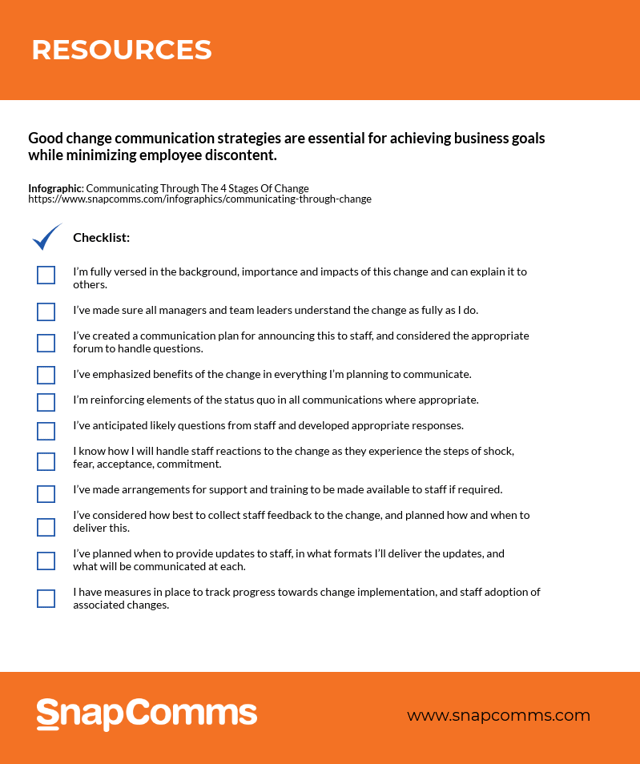
Change can rejuvenate an organization, positioning it for future growth. But the process of change causes unease for employees. Communication strategies that ease employees from concern to commitment are essential.
High-level change affects a large number of organizations. The US has seen more than 325,000 mergers & acquisitions since 1985. It was a record year in 2017, with 15,100 deals made – a 12% increase over 2016.
While on a smaller scale, the UK tells the same story. In 2017, over 3,900 deals took place – a growth of 7% compared to 2016.
Despite this, 45% of employees prefer the status quo at work. This disconnect between employer goals and employee comfort causes resistance.
Well-planned, formalized change communication strategies can smooth the period of change for everyone. In a 2013 study, nearly half of employees felt that most resistance to workplace change could be avoided if managers applied good change management practices.
Our handy 1-2-3 guide and checklist below will help you with creating an effective change communication strategy – one that is proactive, fosters support, and manages objections.
1. Preparation
1. Know the story inside-out – What is the change? What’s the purpose of it? What are the time frames? What are the consequences of maintaining the status quo?
2. Maintain control of the message – Cascade down consistently to all managers and team leaders.
3. Anticipate points of resistance – Develop tactics to address and defuse them.
4. Plan the best way to advise staff – Consider the different ages, cultures, etc. Is face-to-face feasible? Is live video or video alerts an alternative? Will an opportunity to ask questions be offered?
5. Understand the cycle of acceptance for employees – Shock, fear, acceptance, commitment. Plan what responses (verbal and emotional) you’ll need to demonstrate at each step.
2. Management (Delivery)
1. Communicate appropriately through the cycle of acceptance – Focus on moving employees through each step, not trying to immediately reach commitment.
2. Communicate clearly and often – Be creative in your communications. Disclose as much as you’re able to reduce rumors and suspicion.
3. Be honest and transparent – Build the trust staff needs to buy into the change.
4. Reinforce the positives – Defuse the natural inclination to focus on the negatives. How will the change make the company stronger? How will employees benefit? Will new roles be created?
5. Emphasize constants – Give equal weight to what’s not changing as to what is. What aspects that are familiar and comfortable to staff will stay unchanged?
3. Reinforcement (Follow-up)
1. Continue to communicate – Ongoing updates should both inform and reassure. Repetition through desktop tickers and corporate wallpapers is key. Silence is the enemy of change.
2. Lead from the front – Exemplify the behaviors that you want your staff to exhibit.
3. Provide transitional support – Make personalized coaching and training available.
4. Gauge adoption of new processes – Track compliance to changes and develop plans to bridge any gaps identified.
5. Establish two-way dialogue – Collect feedback through staff surveys on the changes. Acknowledge concerns, but recognize that it will be impossible to solve all of them.



